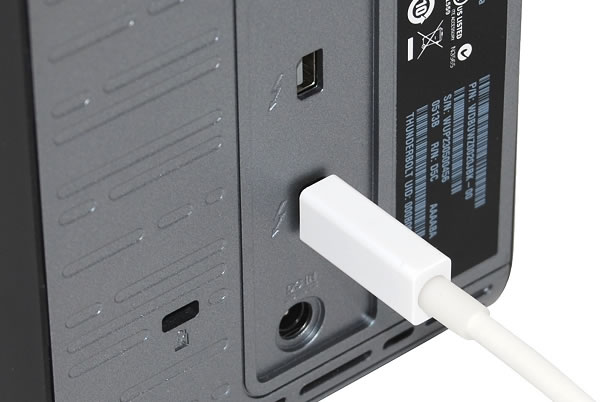Final Thoughts
The Gigabyte Z77X-UP5TH is an impressive motherboard and overall, you aren't paying a huge premium for its onboard Thunderbolt ports. As pricing stands now, the Z77X-UD5H-WB is very similar to the UP5TH minus Thunderbolt and it's $210 versus $240. If you're already spending over $200 on a motherboard, the extra $30 is probably worthwhile unless you're certain you won't make use of the functionality, which includes the ability to daisy chain up to 12 devices plus two displays.
Unfortunately, we can't be that enthusiastic about Western Digital's Velociraptor Duo at $900. The unit is slower than today's high-performance SSDs and it's cheaper to purchase a pair of Vertex 4 512GB drives than it is to buy the Velociraptor Duo.
Although you'd only have half the storage, the Vertex 4 drives would be worlds faster – especially in RAID. Therefore, the only scenario where the Velociraptor Duo might make sense is if a workload were too big to fit on a similarly priced SSD array.

While we recommend that you skip the Western Digital Velociraptor Duo if you priorize performance over capacity, we don't necessarily think you should do the same with Thunderbolt.
Although the results were somewhat disappointing as the Velociraptor 1TB hard drives were consistently faster when connected directly to the Gigabyte board's SATA 6Gb/s ports – much faster in some cases – this doesn't mean Thunderbolt will be disappointing in all situations. At this point, it's hard for us to say just how useful Thunderbolt may or may not be for PC users.
The interface has a heap of bandwidth and it should be possible to sustain 1GB/s transfers under the right conditions while also driving a few displays. Clearly, one Velociraptor Duo storage device is not the right product to show off Thunderbolt's full capabilities and right now, there doesn't seem to be such a device.
Among Thunderbolt's selling points is its ability to support multiple devices from one port, but most high-performance Thunderbolt gear is currently prohibitively expensive.
For now, Thunderbolt probably isn't worth investing in for most users as there are many other ubiquitous interfaces that better utilize today's hardware, such as USB 3.0 and eSATA. However, there's no denying that Thunderbolt has a lot of potential and it could very well emerge as a dominant standard over the next couple years, so folks purchasing new high-end motherboards may want to splurge now in the event that such a future unfolds – especially if it'll be a while between platform updates.
Gigabyte Z77X-UP5TH scorecard
Pros: Last-gen, no holds barred Z77 motherboard. Great feature set including x2 thunderbolt ports, x4 6Gb/s SATA ports and x10 USB 3.0 ports. Good layout and construction.
Cons: A tad expensive, even for what you're getting.
WD My Book Velociraptor Duo scorecard
Pros: Good capacity, features and performance provided by Velociraptor hard drives in RAID. Thunderbolt support means you can daisy chain other drives and devices without hitting bottlenecks so easily.
Cons: Very expensive and not a great value versus SSDs. Thunderbolt-only. For more capacity, WD's own Thunderbolt Duo might make more sense.
